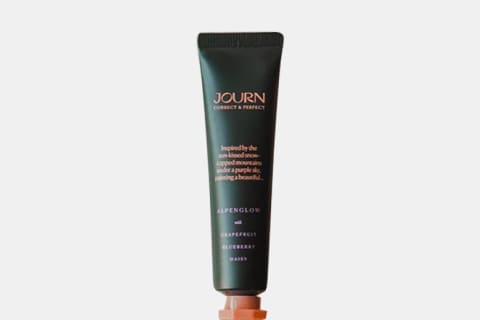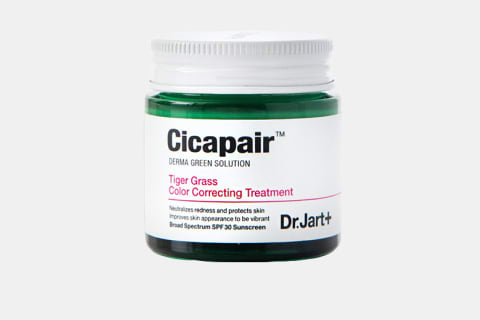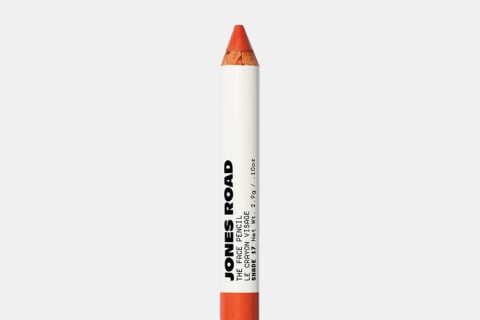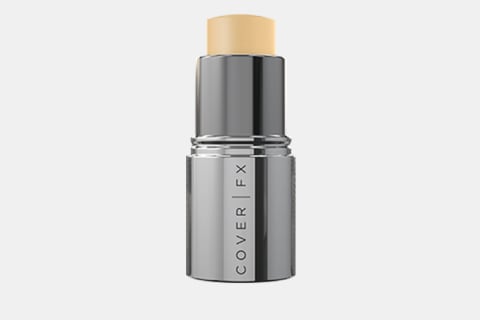Your Guide To Color Correctors: Expert Tips To Apply + The Best Products

Makeup is an art form—this includes coloring outside the lines and using beauty as self-expression, of course, but it's also a lot more technical than that: Before swirling on an ethereal shade to top off your masterpiece, it helps to start with an even canvas.
Enter color correctors, where makeup meets color theory. These helpful hues enhance your complexion products (like foundation and concealer) and nix discoloration in a mere swipe.
Thinking of using a color corrector? Consider the below your handy field guide.
What is a color corrector?
Remember those complementary colors on the color wheel? Purple contrasts with yellow, orange sits opposite blue, and so on. Well, this same logic can help neutralize discoloration in your skin—purple can cancel out sallowness, an orangey peach can warm up cool shadows, and the list goes on (more specific matches below).
Each type of discoloration portrays slightly different undertones (redness, purple shadows, etc.), so you'd choose a hue based on which type you'd like to target. "Color corrector can be especially transformative for dark circles. I'm personally a huge fan," adds makeup artist Alexandra Compton, product development manager at clean beauty retailer Credo.
Who should use it?
Color correctors are great if you're looking to balance discoloration—say, if you notice mauve shadows under your eyes, redness around your nose, or sallow tints in your skin—but if you're looking to just generally brighten up the area, you don't have to use such a pigmented product. "It can make your skin tone look odd if you apply it on skin that doesn't need to be corrected," notes makeup artist Jenny Patinkin. For example, "If you use a very yellow or peach concealer on an area that doesn't have any dark undertones, it can make your skin look oddly sallow."
That said, you should only use a color corrector on areas that need evening out. If you're simply looking to cover up under-eye bags, fine lines, or blemishes, your regular flesh-toned concealer will do.
Types of color correctors.
Color correctors range far and wide, and you may need a lighter or richer hue based on your skin tone. Here, take a peek at the four most common color categories:
- Green: If you have any redness in the skin, a green color corrector can help cool those undertones. Apply it around the eyes and nose, or you can even spot-conceal inflamed zits to bring down the redness. And if you have overall redness in the skin, Compton says you can mix a green color corrector with your favorite primer for a "subtle color-correcting makeup base."
- Orange: Use an orange or peach color corrector anywhere you want to add some warmth. Typically, it's used to counteract blue or purple discoloration, like under-eye shadows. The exact shade may depend on your skin tone (according to Compton, fairer skin tones might fare well with more of an apricot shade; deeper skin tones may want a peach or vermilion corrector), but you'll typically stick to the orangey family.
- Yellow: Yellow correctors are a bit of a hybrid—for very fair skin tones, they can help neutralize redness, but for all skin tones, they're more commonly used to brighten up purple shadows. Or, if you have golden undertones in your skin, applying a yellow corrector can help highlight those hues (similar to why you might use a banana powder).
- Purple: To neutralize sallow skin—which typically has hints of yellow—a lavender shade can help cool and brighten those hues. Remember, purple sits opposite yellow on the color wheel, so both pigments can help balance each other out.
How to color correct.
"Where you place the concealer all depends on where you have discoloration," notes Patinkin. "Some people only need it at the inner corners of their eyes; others need it at the outer corners as well, and others need it all the way across." Again, apply the pigment only where you need it.
A little product also goes a long way: Compton suggests mixing the corrector with primer to start with less intensity, building it up if need be. If you have heavy discoloration, you can apply the corrector directly to the skin, but start slow. See, you're not trying to conceal the discoloration completely—you're trying to neutralize it. "Foundation or concealer on top of the corrector will conceal," says Compton. "You want to ensure that you don't have heavy layers of product that run the risk of creasing or separating with wear."
For application, Compton recommends using your fingertips as opposed to a brush—the warmth from your skin melts the pigment for a more seamless finish. Some people even use multiple correctors for different areas of their face—a green hue wherever they notice redness, a spot of lavender for sallow areas, and a peachy number for dark shadows. Feel free to play around with the color wheel.
Tap to blend (gently, especially if you're color correcting the delicate eye area), and apply a concealer on top for extra brightness. "It's important to tap to blend, and not rub, so that you don't disturb the color-correcting concealer you applied underneath," says Patinkin.
Finally, you can top with a setting powder to increase the wear time or simply move on with the rest of your makeup routine.
The takeaway.
To balance discoloration, the right color corrector is a game-changer. Match the complementary pigment to the area you'd like to target, and you'll create an even canvas.

Jamie Schneider is the Beauty Editor at mindbodygreen. She has a B.A. in Organizational Studies and English from the University of Michigan, and her work has appeared in Coveteur, The Chill Times, and more. In her role at mbg, she reports on everything from the top beauty industry trends, to the gut-skin connection and the microbiome, to the latest expert makeup hacks. She currently lives in Brooklyn, New York.



